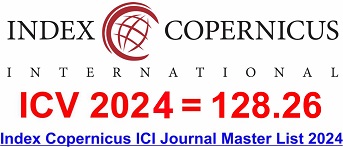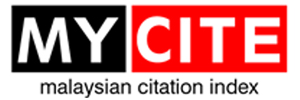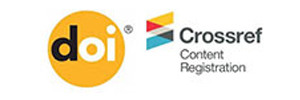The Impact of ISBAR3 (Identity, Situation, Background, Assessment, Recommendation, Read-back, Risk) Implementation on Nursing Shift Handover Quality and Patient Satisfaction Improvement at Pariaman Regional Public Hospital
DOI:
https://doi.org/10.31674/mjn.2024.v16isupp1.015Abstract
Background: Effective communication among healthcare professionals is crucial for minimising medical errors and improving patient safety. ISBAR3 (Identity, Situation, Background, Assessment, Recommendation, Read-back, Risk) is a structured communication method designed to enhance the quality of information exchange in medical settings. Objective: This study aims to evaluate the impact of ISBAR3 implementation on nursing shift handover quality and patient satisfaction at Pariaman Regional Public Hospital. Methods: Using a quasi-experimental design with a pre-test and post-test approach, the sample consisted of 128 patients selected through purposive sampling. The sample was divided into two groups: 64 for the experimental group (handover using ISBAR3) and 64 for the control group (conventional handover). Nurses were trained to use the ISBAR3 for three months. Handover quality was assessed using a standardised observation sheet before and after the intervention. Nursing shift handover quality and patient satisfaction were measured using a validated questionnaire. Data were analysed using MANOVA (Multivariate Analysis of Variance) with a significance level of p<0.05. Results: Results showed significant improvements in nursing shift handover quality F(1, 126) = 9.635, p = 0.007, Partial Eta Squared = 0.812) and patient satisfaction (F(1, 126) = 11.684, p = 0.001, partial eta squared = 0.851). The effect size was large, with ISBAR3 explaining 81.2% of the variance in handover quality and 85.1% of the variance in patient satisfaction. Conclusion: The implementation of ISBAR3 method enhanced nursing handover quality and patient satisfaction. The findings highlighted the use of ISBAR3 as a standard tool for nursing handovers to improve the quality of patient care.
Keywords:
Healthcare Communication, ISBAR3, Nursing Handover Quality, Nursing Shift Handover, Patient SatisfactionDownloads
References
Abou Hashish, E. A., Asiri, A. A., & Alnajjar, Y. K. (2023). Shift handover quality in Saudi critical care units: Determinants from nurses’ perspectives. BMC Nursing, 22(1), 186. https://doi.org/10.1186/s12912-023-01348-z
Ali, B. J., Anwer, R. N. A. D., & Anwar, G. (2021). Private hospitals’ service quality dimensions: The impact of service quality dimensions on patients’ satisfaction. International Journal of Medical, Pharmacy and Drug Research, 5(3), 7-19. https://dx.doi.org/10.22161/ijmpd.5.3.2
Badrujamaludin, A., Supriadi, D., Yesayas, O., Rudhiati, F., Fitriani, H., Kumala, T. F., & Wahyuna, S. (2021). Application of “SISBAR” for effective communication between nurses and doctors at private hospital in Indonesia. Jurnal Keperawatan Komprehensif, 7(Special Edition), 50-58. Retrieved from: https://journal.stikep-ppnijabar.ac.id/index.php/jkk/article/view/258. Accessed on 19th October, 2023.
Brown-Deveaux, D., Kaplan, S., Gabbe, L., & Mansfield, L. (2022). Transformational leadership meets innovative strategy: How nurse leaders and clinical nurses redesigned bedside handover to improve nursing practice. Nurse Leader, 20(3), 290-296. https://doi.org/10.1016/j.mnl.2021.10.010
Bruton, J., Norton, C., Smyth, N., Ward, H., & Day, S. (2016). Nurse handover: patient and staff experiences. British Journal of Nursing, 25(7), 386–393. https://doi.org/10.12968/bjon.2016.25.7.386
Burgener, A. M. (2020). Enhancing communication to improve patient safety and to increase patient satisfaction. The Health Care Manager, 39(3), 128–132. https://doi.org/10.1097/hcm.0000000000000298
Burgess, A., van Diggele, C., Roberts, C., & Mellis, C. (2020). Teaching clinical handover with ISBAR. BMC Medical Education, 20(2), 1–8. https://doi.org/10.1186/s12909-020-02285-0
Campbell, S., Greenwood, M., Prior, S., Shearer, T., Walkem, K., Young, S., Bywaters, D., & Walker, K. (2020). Purposive sampling: complex or simple? Research case examples. Journal of Research in Nursing, 25(8), 652–661. https://doi.org/10.1177/1744987120927206
Chen, X., Liu, M., Liu, C., Ruan, F., Yuan, Y., & Xiong, C. (2020). Job satisfaction and hospital performance rated by physicians in China: A moderated mediation analysis on the role of income and person–organization fit. International Journal of Environmental Research and Public Health, 17(16). https://doi.org/10.3390/ijerph17165846
Chien, L. J., Slade, D., Dahm, M. R., Brady, B., Roberts, E., Goncharov, L., Taylor, J., Eggins, S., & Thornton, A. (2022). Improving patient‐centred care through a tailored intervention addressing nursing clinical handover communication in its organizational and cultural context. Journal of Advanced Nursing, 78(5), 1413–1430. https://doi.org/10.1111/jan.15110
Creswell, J. W., & Creswell, J. D. (2017). Research design: Qualitative, quantitative, and mixed methods approaches (5th ed.). Sage Publications, USA. Retrieved from: https://spada.uns.ac.id/pluginfile.php/510378/mod_resource/content/1/creswell.pdf. Accessed on 17th October, 2023.
David, A. (2023). Nurses’ Perceptions on the Role of “End-of-shift” Verbal Handover: Mixed Method Research. (Doctoral dissertation, RMIT University, Australia). https://doi.org/10.25439/rmt.27598485
Esteban‐Sepúlveda, S., Sesé‐Abad, A., Lacueva‐Pérez, L., Domingo‐Pozo, M., Alonso‐Fernandez, S., Aquilue‐Ballarin, M., Barcelo‐Martinez, A. I., Cristobal‐Dominguez, E., Bujalance‐Hoyos, J., & Dossantos‐Sanchez, C. (2021). Impact of the implementation of best practice guidelines on nurse’s evidence‐based practice and on nurses’ work environment: Research protocol. Journal of Advanced Nursing, 77(1), 448–460. https://doi.org/10.1111/jan.14598
Fahajan, Y., Albelbeisi, A., Shnena, Y. A., Emad, O. J., Kweik, D. A., Kakemam, E., & Albelbeisi, A. H. (2023). Effect of ISBAR Clinical handover application on Nurses’ perception of communication and attitudes toward patient safety at Emirates Maternity Hospital in Gaza Strip, Palestine. Ethiopian Journal of Health Sciences, 33(5), 769–780. https://doi.org/10.4314/ejhs.v33i5.7
Foley, C., & Dowling, M. (2019). How do nurses use the early warning score in their practice? A case study from an acute medical unit. Journal of Clinical Nursing, 28(7–8), 1183–1192. https://doi.org/10.1111/jocn.14713
Franklin, K. (2021). Strategies Healthcare Leaders Use to Improve Patient Satisfaction (Doctoral dissertation, Walden University, USA). Retrieved from: https://scholarworks.waldenu.edu/dissertations/11282. Accessed on 24th October, 2023.
Giles, H., Edwards, A. L., & Walther, J. B. (2023). Communication accommodation theory: Past accomplishments, current trends, and future prospects. Language Sciences, 99, 101571. http://dx.doi.org/10.1016/j.langsci.2023.101571
Guevara-Lozano, M., Pérez-Giraldo, B., Arroyo-Marlés, L. P., Nonsoque-Cholo, M. A., & Sánchez-Herrera, B. (2024). The nursing inters shift handover: A moment of care for patients and their family caregivers. Hispanic Health Care International. https://doi.org/10.1177/15404153241246804
Hada, A., & Coyer, F. (2021). Shift‐to‐shift nursing handover interventions associated with improved inpatient outcomes - Falls, pressure injuries and medication administration errors: An integrative review. Nursing & Health Sciences, 23(2), 337–351. https://doi.org/10.1111/nhs.12825
Johnson, K. R. (2022). Bedside Shift Report and Patient Satisfaction. (Doctoral dissertation, Abilene Christian University, USA). Retrieved from: https://digitalcommons.acu.edu/etd/466. Accessed on 24th October, 2023.
Johnson, S. (2023). Increasing Patient and Staff Satisfaction with Communication by Implementing TeamSTEPPS 2.0: A Quality Improvement Project (Doctoral dissertation, Northwestern State University of Louisiana, USA).
Kakemam, E., Gharaee, H., Rajabi, M. R., Nadernejad, M., Khakdel, Z., Raeissi, P., & Kalhor, R. (2021). Nurses’ perception of patient safety culture and its relationship with adverse events: A national questionnaire survey in Iran. BMC Nursing, 20, 1–10. https://doi.org/10.1186/s12912-021-00571-w
Kaltoft, A., Jacobsen, Y. I., Tangsgaard, M., & Jensen, H. I. (2022). ISBAR as a structured tool for patient handover during postoperative recovery. Journal of PeriAnesthesia Nursing, 37(1), 34–39. https://doi.org/10.1016/j.jopan.2021.01.002
Karam, M., Chouinard, M.-C., Poitras, M.-E., Couturier, Y., Vedel, I., Grgurevic, N., & Hudon, C. (2021). Nursing care coordination for patients with complex needs in primary healthcare: a scoping review. International Journal of Integrated Care, 21(1). https://doi.org/10.5334/ijic.5518
Kemppainen, J. (2023). Use of the ISBAR-reporting Method among Nurses for Patient Handovers in the Emergency Department: A Literature Review. Bachelor’s Thesis, Laurea University of Applied Sciences, Finland. Retrieved from: https://www.theseus.fi/bitstream/handle/10024/810927/Kemppainen_Jenni.pdf?sequence=2. Accessed on on 7th November, 2023.
Kitney, P., Tam, R., Bennett, P., Buttigieg, D., Bramley, D., & Wang, W. (2016). Handover between anaesthetists and post-anaesthetic care unit nursing staff using ISBAR principles: A quality improvement study. ACORN: The Journal of Perioperative Nursing in Australia, 29(1), 30–35. https://doi.org/10.26550/2209-1092.1001
Krohwinkel, A., Mannerheim, U., Rognes, J., & Winberg, H. (2021). Value-based healthcare in theory and practice. Leading Health Care. Retrieved from: https://leadinghealthcare.se/wordpress/wp-content/uploads/2021/08/LHC_VBHC-Policy-Brief_210629.pdf . Accessed on 19th October, 2023.
Le, A., Lee, M. A., & Wilson, J. (2023). Nursing handoff education: An integrative literature review. Nurse Education in Practice, 68. https://doi.org/10.1016/j.nepr.2023.103570
Mardis, M., Davis, J., Benningfield, B., Elliott, C., Youngstrom, M., Nelson, B., Justice, E. M., & Riesenberg, L. A. (2017). Shift-to-shift handoff effects on patient safety and outcomes: A systematic review. American Journal of Medical Quality, 32(1), 34–42. https://doi.org/10.1177/1062860615612923
Mensah, C. A. (2020). Assessing handover process and communication among registered nurses at Cape Coast Teaching Hospital (Doctoral dissertation, University of Cape Coast). Retrieved from: http://hdl.handle.net/123456789/6623. Accessed on 25th October, 2023.
Mohammed, K., Nolan, M. B., Rajjo, T., Shah, N. D., Prokop, L. J., Varkey, P., & Murad, M. H. (2016). Creating a patient-centered health care delivery system : A systematic review of health care quality from the patient perspective. American Journal of Medical Quality, 31(1), 12–21. https://doi.org/10.1177/1062860614545124
Moretta Tartaglione, A., Cavacece, Y., Cassia, F., & Russo, G. (2018). The excellence of patient-centered healthcare: Investigating the links between empowerment, co-creation and satisfaction. The TQM Journal, 30(2), 153–167. https://doi.org/10.1108/TQM-11-2017-0138
Müller, M., Jürgens, J., Redaèlli, M., Klingberg, K., Hautz, W. E., & Stock, S. (2018). Impact of the communication and patient hand-off tool SBAR on patient safety: A systematic review. BMJ Open, 8(8). https://doi.org/10.1136/bmjopen-2018-022202
Nzele, C., & Sekinat, D. (2023). Nurses’ handover and continuity of patient care in hospital settings. Diaconia University of Applied Sciences (Theses (Open collection). Retrieved from : https://urn.fi/URN:NBN:fi:amk-2023060722727 . Accessed on 29th October, 2023.
Pakcheshm, B., Bagheri, I., & Kalani, Z. (2020). The impact of using “ISBAR” standard checklist on nursing clinical handoff in coronary care units. Nursing Practice Today, 7(4). https://doi.org/10.18502/npt.v7i4.4036
Persico, L. (2017). A comparison of two debriefing methods on clinical reasoning outcomes, learner satisfaction with debriefing and reflection, clinical learning and clinical reasoning, and psychological safety of nurse orientees in simulation-based education (Doctoral dissertation, Molloy College, USA). Retrieved from: https://digitalcommons.molloy.edu/etd/59. Accessed on 7th October, 2023.
Pun, J. (2023). Using a simulation-based approach to promote structured and interactive nursing clinical handover: A pre-and post-evaluation pilot study in bilingual Hong Kong. BMC Nursing, 22(1), 38. https://doi.org/10.1186/s12912-023-01189-w
Qureshi, N. J., Thaver, I. H., Shahid, O., Khalid, M., Arshad, Z., Yusuf, M., Sarwar, M., Hussain, H., & Fatima, W. (2022). Are patients satisfied with healthcare services in hospitals? which dimensions influence it. Journal of Bahria University Medical and Dental College, 12(02), 100–105. https://doi.org/10.51985/JBUMDC202131
Reime, M. H., Tangvik, L. S., Kinn-Mikalsen, M. A., & Johnsgaard, T. (2024). Intrahospital Handovers before and after the Implementation of ISBAR Communication: A quality improvement study on ICU Nurses’ handovers to general medical ward nurses. Nursing Reports, 14(3), 2072–2083. https://doi.org/10.3390/nursrep14030154
Rofiqi, E., Triharini, M., & Hidayat, A. A. A. (2020). The Effectivenes of Simulation Methods to Improve Communicatio Skill in Clinical Nursing Practice: A Systematic Review. STRADA Jurnal Ilmiah Kesehatan, 9(2), 1238–1249. https://doi.org/10.30994/sjik.v9i2.420
Shirazi, H., Kia, R., & Ghasemi, P. (2020). Ranking of hospitals in the case of COVID-19 outbreak: A new integrated approach using patient satisfaction criteria. International Journal of Healthcare Management, 13(4), 312–324. http://dx.doi.org/10.1080/20479700.2020.1803622
Siokal, B., Amiruddin, R., Abdullah, T., Thamrin, Y., Palutturi, S., Ibrahim, E., Syam, Y., Pamungkas, R. A., Mappanganro, A., & Mallongi, A. (2023). the influence of effective nurse communication application on patient satisfaction: A Literature Review. Pharmacognosy Journal, 15(3). http://dx.doi.org/10.5530/pj.2023.15.105
Talbert, R. (2014). Inverting the Linear Algebra Classroom. Primus, 24(5), 361–374. https://doi.org/10.1080/10511970.2014.883457
Teisberg, E., Wallace, S., & O’Hara, S. (2020). Defining and implementing value-based health care: a strategic framework. Academic Medicine, 95(5), 682–685. https://doi.org/10.1097/ACM.0000000000003122
Thomson, H., Tourangeau, A., Jeffs, L., & Puts, M. (2018). Factors affecting quality of nurse shift handover in the emergency department. Journal of Advanced Nursing, 74(4), 876–886. https://doi.org/10.1111/jan.13499
Published
How to Cite
Issue
Section
License
Copyright (c) 2025 The Malaysian Journal of Nursing (MJN)

This work is licensed under a Creative Commons Attribution-NonCommercial-NoDerivatives 4.0 International License.



































